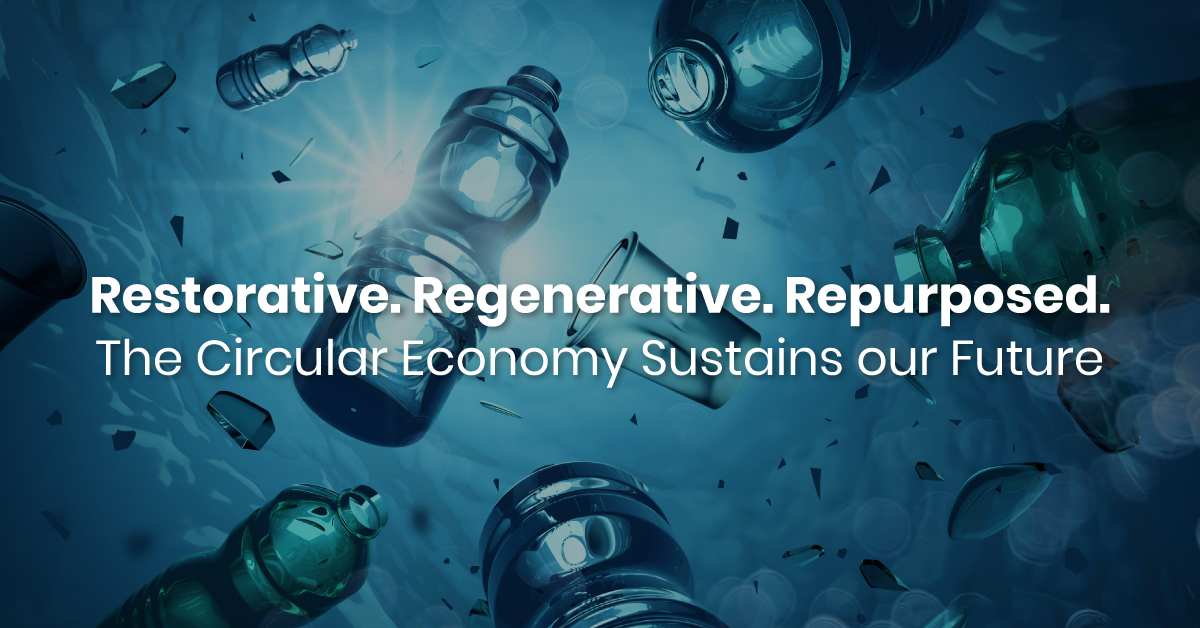Waste Less. Collaborate More.
A circular economy doesn’t happen by accident. It’s designed intentionally, building on three principles:
- Designing out waste and pollution
- Keeping products and materials in use
- Regenerating natural systems
Together these factors create a “closed loop” — a circular process that focuses on renewing materials and giving them new life.
It’s a collaborative effort. People and organizations working at every stage at the circle — design, production, distribution, collection and recycling — are part of a bigger system committed to eliminating waste and recycling materials.
Benefits of Circular Economy
The notable benefits include:
Sustainability — A circular system’s leading benefit is its sustainability — striving towards a healthier environment for our communities and our planet. While it’s not always possible to eliminate all waste, the circular model aims to minimize the leakage or waste and pollution, and provide alternatives, as much as possible.
Long-Term Renewal — Circularity is about renewal. In a circular process, products don’t end with use and disposal. A product reaching the end of its useful life is at the start of its new life! Renewal is efficient, sustainable and the basis for a long-term strategy.
Economic and Social Benefits — Introducing a circular model creates a new set of economic and social benefits. In Lavergne’s case, our Haiti operations (read here) have created economic benefits of new jobs, more skills training and greater spinoff opportunities. Those economic benefits are already driving greater community and educational programs for families in that Caribbean nation.
Transforming People’s Understanding — Probably the most exciting part of any change is seeing a transformation in people’s assumptions and understandings. In the case of the circular economy, we see a real shift in the way we think about people. In the traditional economy, people are “consumers.” In a circular economy, people become “users.”
Circularity also introduces a new contract between businesses and their customers. Going forward, using recycled materials will be a normal part of people’s expectations.
A Widespread Idea
The circular economy is not a new idea. Through most of history, the limited access to resources meant repurposing was the only way to live. During the Second World War, countries needed to maximize their resources by repurposing products, components and materials as much as possible. In the post-war years, as countries industrialized their economies, many emphasized self-reliance and closed loop where all the resourcing, production and re-use was enclosed within the existing resource base.
So while we embrace the circular economy, we certainly didn’t invent it!
Industry Initiatives
Circular economic models are growing in prevalence in various industries:
- Automotive manufacturers are striving to maximize reusable and recycled materials and components
- Major consumer electronics companies are using recycled plastics to make parts for laptops, desktop computers, ink cartridges and other accessories (read here)
- Textile companies are recycling and reusing fabrics and fibres from used products
- While the construction industry generally has a large waste output, those companies are always looking for ways to reuse materials and alternatives for non-renewable resources
Lavergne Delivering Results at Scale
Lavergne’s plastic recycling programs are at the forefront of the circular model.
It seems natural to start small and deliver modest improvements, because most companies are currently at that stage.
Lavergne’s plastic recycling is a different story. We are working on a large scale with locations across the globe collecting post-consumer plastics, then creating resins for manufacturers in the automotive, consumer electronics and appliance industries.
Renewal is at the heart of what we do. We believe the world has already produced enough plastic to fulfill its need for a long time to come.
To learn more about the circular economy and Lavergne’s groundbreaking work, stay tuned to this space.


